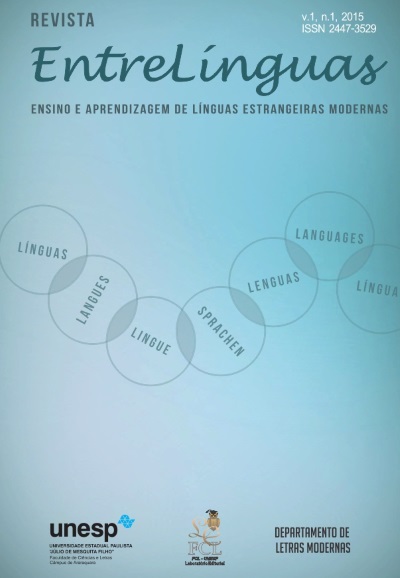An approach to "The Milk of Sorrow" as a hispanic intercultural narrative film
DOI:
https://doi.org/10.29051/el.v1i1.8056Keywords:
Hispanic intercultural cinema, Narrative film, The Milk of Sorrow, Displacement, Hybridity,Abstract
The following article aims to develop a Hispanic intercultural cinematic study of the film “The Milk of Sorrow,” written and directed by the Peruvian filmmaker Claudia Llosa that was awarded the Golden Bear at the Berlin Film Festival in 2009. The plot of the movie tells the story of Fausta, a young girl descendant of Amerindians who suffers from a rare disease called “milk of sorrow” or “shock syndrome”, the name given to a supposed disease transmitted by fear and suffering of the mother for her child through breast milk reaching the daughters of women who were raped by terrorists or the Peruvian army soldiers in the decade of the eighties, a time of social and political instability in recent history of Peru. The connection between cinema, society and culture emerged significant and close relations from the perspective of an intercultural film that, according Hudson (2010), attempts to translate into images the experience of living between two or more different cultures and societies that view new ways of thinking and knowledge and can be considered a shared movie for people who have suffered displacement and who lived hybrid modes, as the case of the film “the Milk of Sorrow”.
Downloads
Downloads
Published
How to Cite
Issue
Section
License
Os manuscritos aceitos e publicados são de propriedade da Revista EntreLínguas. Os artigos publicados e as referências citadas na Revista EntreLínguas são de inteira responsabilidade de seus autores.
Transferência de direitos autorais – autorização para publicação
Caso o artigo submetido seja aprovado para publicação, já fica acordado que o(s) autor(es) autoriza(m) a UNESP a reproduzi-lo e publicá-lo na EntreLínguas, entendendo-se os termos “reprodução” e “publicação” conforme definição respectivamente dos incisos VI e I do artigo 5° da Lei 9610/98. O artigo poderá ser acessado pela rede mundial de computadores (Internet), sendo permitidas, a título gratuito, a consulta e a reprodução de exemplar do artigo para uso próprio de quem a consulta, desde que haja a citação ao texto consultado. Essa autorização de publicação 328 EntreLínguas, Araraquara, v. 1, n .2, p. 323-328, jul./dez. 2015 não tem limitação de tempo, ficando a UNESP responsável pela manutenção da identificação do(s) autor(es) do artigo. Os artigos publicados e as referências citadas na Revista EntreLínguas são de inteira responsabilidade de seus autores.











